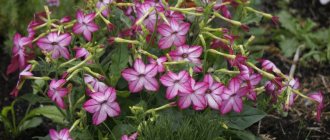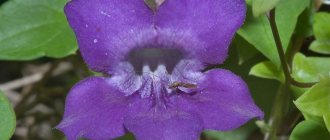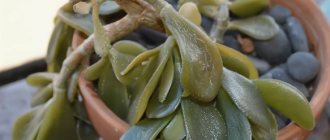Calendula, otherwise known as marigold, is a herbaceous plant that belongs to the Aster family. Western Europe, Asia and the Mediterranean are where calendula grows in the wild.
The name of the plant has Latin roots and in translation means the first day of the month. This genus includes about 20 species that are classified as annuals.
At the same time, varieties of calendula, in addition to exclusively decorative ones, also include species with healing properties - medicinal marigolds.
Growing calendula does not present any difficulties, since the plant is unpretentious.
Botanical description
From the photo of calendula, many people know what this plant looks like. The flowers are yellow and orange, grouped into single inflorescences - “baskets”. The calyxes reach 4 cm in diameter.
The outer part of the flowers consists of elongated petals. In the center there are small tubular flowers.
The leaves of calendula are alternate and oblong in shape. Stems are erect and branched. They can reach 70 cm. The plant blooms from June to September. Domesticated flowers are larger.
general information
Calendula is a very compact and neat representative of the Asteraceae family with characteristic basket-shaped inflorescences. It originally grew in the Mediterranean and parts of Asia, but is now found throughout the world.
Calendula has a developed taproot and a straight stem, which can be branched, depending on the species. Height varies from 15 to 70-80 cm. The shoots are slightly sticky to the touch due to special glandular fibers.
Calendula baskets are collected from flat reed petals of yellow or orange color. Flowering lasts from summer to autumn cold snaps, and throughout the entire season the plant exudes an expressive aroma.
We can talk about the medicinal properties of calendula for a very long time. It is not for nothing that it is grown in entire plantations, and its extract is actively used even in official medicine. In gardening, the beautiful flower is grown in mixborders, carpet plantings, for decorating terraces and balconies, and as a background for flower beds.
Photo: vesel-dk.pavkult.ru
Varieties of calendula
There are about 20 species and varieties. The development of new varieties is carried out simultaneously in two directions:
- medical;
- decorative
For today's laziness, the best varieties of decorative calendula are: Yuvel, Radio, Sensation. Among the medicinal species, the most valuable are: Ryzhik, Sakharov orange.
Calendula officinalis (marigold)
Height up to 70 cm. Flowers are bright yellow. They have a refreshing aroma. The stems are highly branched.
The most common type. Seeds retain the ability to germinate for up to 5 years!
Decorative types of calendula officinalis are in priority due to their larger size and length of flowering.
Calendula field
It grows only up to 30 cm. The “baskets” are pale mustard or ocher in color, only 2 cm in diameter.
Not popular, because... The flowers are quite small and inconspicuous.
After flowering
At the end of the calendula flowering period, it is necessary to break off the stems with green seeds to prevent self-seeding and prolong flowering.
After the plant has completely stopped blooming, the seeds are collected and the remaining stems are dug up, since marigolds are an annual.
Collecting seeds
Harvesting is done after they are completely ripe.
To prevent self-seeding, you need to put a small gauze bag on the already wilted inflorescence.
This seed collector is fixed on the stem of the calendula.
Calendula in winter
Marigolds are annuals and after flowering has stopped, the plants can be dug up and removed from the site.
Also, if the seeds were planted in the fall, then they can easily withstand winter frosts while in the ground, and in the season they will give good sunrises.
Garden calendula looks great surrounded by many other ornamental plants. Due to their unpretentiousness, many varieties of marigolds are used as flowers that are planted along fences and paths in country houses.
Due to the high content of essential oil, marigolds can repel some pests, which is a good addition in the case of mixed plantings.
Properties of calendula
Benefit
Calendula has an incredibly rich composition:
- minerals (fluorine, zinc, magnesium, iron, iodine);
- vitamins (B1, C, E, F, K and others);
- essential oils. This means that the plant has an antimicrobial, calming effect;
- flavonoids are an excellent antispasmodic;
- carotenoids - substances that participate in the synthesis of the most important vitamin A;
- coumarins – have analgesic and anti-inflammatory properties;
- sterols – reduce cholesterol levels.
You can continue for a long time... In addition to all of the above, the calendula plant is a valuable honey plant. Also, few people know that marigolds were also used as a vegetable plant: they were added to soups and puddings.
Harm
You should not take preparations prepared from marigolds in the following cases:
- allergic reaction to the plant and its components;
- bronchial asthma;
- exacerbation of ulcers;
- low pressure;
- pregnancy;
- children under 3 years of age - if used externally, and children up to 10 years of age - if used intravenously.
Use in cosmetology
Calendula has also been used in cosmetology: against inflammation of the skin, for regeneration, anti-aging effects, as an antiseptic, for healing wounds. The plant is used for all kinds of infusions and added to creams and lotions. When boiling calendula, they use it as lotions and baths.
Ointments and decoctions for pimples and suppurations are popular. When used, inflammation decreases, and the skin becomes clearer and healthier. Calendula tincture also helps with enlarged pores and oily face.
Calendula oil is included in creams whose action is aimed at rejuvenation, regeneration, saturation with microelements, restoration and nutrition of the skin. You can add the oil to your daily cream yourself: a drop per serving.
After the first use of calendula tincture when washing your hair, the condition of your hair and scalp will improve. The tincture is also used for dandruff, split ends and brittle ends. For quickly soiled and oily hair, marigolds are also used.
Used for hair loss and if you want to grow it back, since thanks to calendula, hair grows faster. Rinse your hair with calendula infusion after washing: strong and shiny curls are guaranteed.
To improve the health of the cells, wipe the skin daily with a cotton pad soaked in calendula tincture.
The effect of a cream or mask will be much stronger if you add a more concentrated infusion to it. Calendula is added to anti-ultraviolet cream and to cream to protect against wind and frost.
You can also prepare tinctures yourself: pour water over the flowers and steam for 15–18 minutes.
Growing
If a flower is not only beautiful, but also useful, it will definitely find its place on the site.
Growing calendula is possible in two ways: in open ground and using seedlings.
Planting in open ground
The simplest option. Calendula is most often planted in April, but it is also possible in October. It is planted in the spring, when the earth not only warms up, but also dries out.
To determine the readiness of the soil, throw in a lump of earth - if it crumbles, you can plant. It is best to dig up the site in the fall, using humus, urea, and phosphorus additives.
Calendula seeds are sown in the soil to a depth of 2 cm. The intervals between seedlings are maintained at 25-30 cm. After 2-3 weeks, the first shoots will appear. They should be thinned out. The excess ones can be transplanted to another place - calendula tolerates “moving” very well. The marigolds will see their first flowers in 10 weeks.
Sowing seeds for seedlings
This is done if you want the plant to bloom earlier. Seeds for seedlings are sown in late March or early April. You can plant them in a separate cup, or in a common box.
Seedlings should be covered with film and maintained at a temperature of 18-20°C. With the appearance of the first shoots, the film is removed and the temperature is reduced to 15°C.
The strengthened seedlings are sent to a permanent place. Planting in the ground is carried out in May, when the plant has several true leaves.
What to remember
- Plant with seeds and seedlings. Grow seedlings for early flowering. Sow directly into the soil in spring and autumn.
- Water, loosen, feed. Take care of the plantings - water frequently in small volumes, loosen the soil after watering, feed twice with nitrogen and mineral fertilizers.
- Use in landscape design. Small varieties look good in pots and containers on balconies and loggias. Medium and tall species are used to decorate flower beds.
Care
Marigolds are not picky about conditions. The flower loves sunlight and well-drained soil.
Care consists of timely watering, periodic weeding and feeding.
You should know how to water the plant: regularly, avoiding excess moisture. On hot days, water generously.
The flower can withstand night frosts. But for this, hardening must be carried out before planting. Boxes with seedlings are taken out into the air for a week.
At the beginning of flowering, calendula can be fertilized with nitrogen - it promotes the growth of green mass. You can also spray with fertilizer containing boron for long and lush flowering.
Pests and diseases
Most often, marigolds are affected by black spotting. To prevent this problem, you should avoid excessive fertilization and also maintain distance between seedlings.
Occasionally, calendula is affected by powdery mildew and aphids.
How to dry calendula correctly
Flowers must be collected in dry weather. The flowers are laid out in a thin layer on paper in a room with good ventilation. It is not recommended to use an electric dryer, because... Some of the beneficial properties will be lost.
To understand whether the calendula has dried or not, you should press your finger on the inflorescence. If the flower has dried well, the “basket” will disintegrate into petals.
Dry flowers are stored in cardboard boxes and glass containers. It is recommended to update the “harvest” annually.
The use of calendula for various diseases
Domestic pharmacists value the plant very much. The flower is used in:
- cardiology;
- cosmetology;
- gynecology;
- gastroenterology;
- dermatology.
In medicine, the plant stands alongside such “helpers” as St. John’s wort, chamomile, and sage.
Remedies from the flower can be taken both internally and externally.
Flowers are most often used. Thus, they contain natural lutein, which helps improve vision. But it’s no secret that in the modern world people spend a huge amount of time at the computer.
Calendula tincture
Marigold tincture is a common home remedy.
You will need 1 tablespoon of flowers (preferably fresh). They are filled with vodka (half a liter). Leave for 10 days in a cool, dark place. After cooking, strain. The tincture retains its beneficial properties for six months.
The decoction is used for quick healing of cuts, gargling for sore throats, and to “disperse” bile.
As a rule, the average dose for an adult is 20-30 drops three times a day. The course lasts no more than two weeks.
As you can see, planting and caring for calendula in open ground does not require much effort. And with the help of this incredible multifunctional flower, you can not only decorate your flowerbed in an interesting way, but also improve the health of your entire body.
Reviews from gardeners
Atlantis, Gelendzhik
Calendula does not require special care. Water as needed. I feed mine on the balcony. I remove faded flowers. Calendula blooms until frost. Looks very good with plants with blue flowers.
Source: otzovik.com
Tatyana Varlamova, Moscow region
By the way, calendula is especially famous for its antibacterial properties, so for chronic tonsillitis and sore throat it is simply an irreplaceable herb.
Source: otzovik.com











